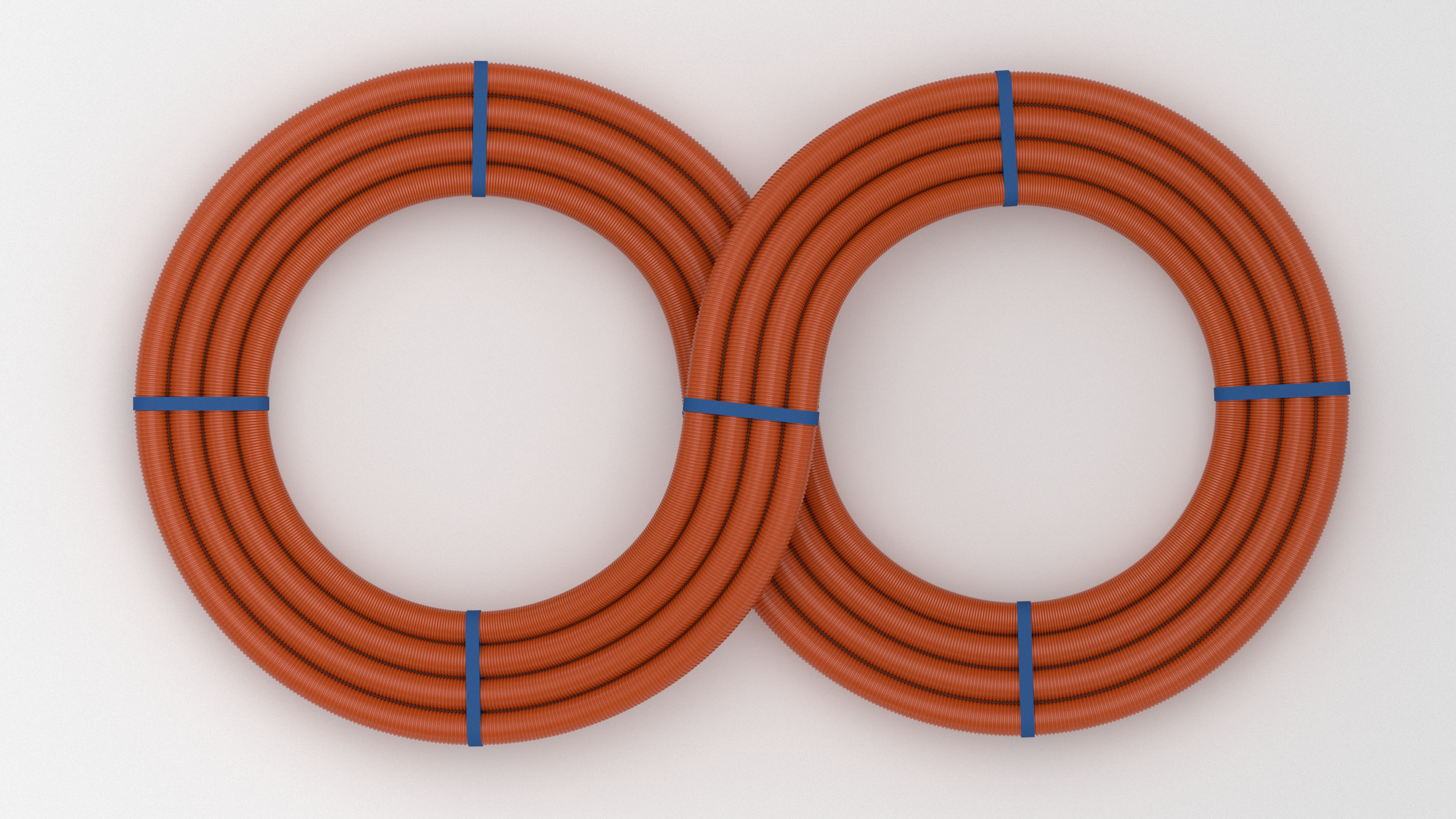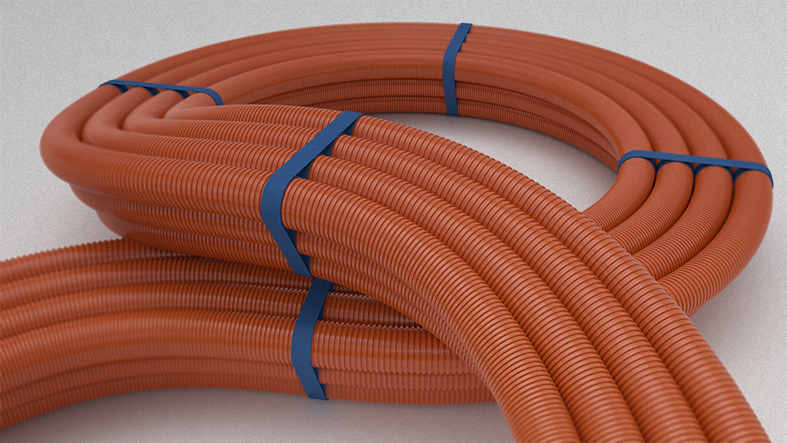THE LOOP
COMPETITION, 2022
THE LOOP
The Loop bench is designed with borrowed materials, aiming to produce no waste. It is entirely made of common construction materials, used in a way which will keep them intact and allow them to return to their typical cycle of use. The idea is based in the economy of sharing, extended onto the building materials to challenge the way we think of resource ownership and management - a loop instead of a product and waste.
The Loop bench is an entry to the Pews and Perches competition held by the London Festival of Architecture under the theme of ‘In Common’. The project is a reflection on architecture’s resource-intensive nature and its inability to implement the principles of circular economy and waste management.
The loop is made of PE corrugated pipes and ratchet straps bound together in a way that allows for the complete reuse of all the elements. The form of the bench is informed by the qualities of the used material - the corrugated pipe naturally forms circular shapes, is made for stacking, has a high load bearing capacity and is heavy enough to be a self-supporting structure.
The individual character of a linear bench is replaced with a notion of togetherness. The Loop encourages a variety of behaviours - being together and apart, lying down to read a book or watch the sky, setting up a picnic - as they all equally belong in the common space.
Type: Competition
Year: 2022
The Loop bench is designed with borrowed materials, aiming to produce no waste. It is entirely made of common construction materials, used in a way which will keep them intact and allow them to return to their typical cycle of use. The idea is based in the economy of sharing, extended onto the building materials to challenge the way we think of resource ownership and management - a loop instead of a product and waste.
The Loop bench is an entry to the Pews & Perches competition held by the London Festival of Architecture under the theme of ‘In Common’. The project is a reflection on architecture’s resource-intensive nature and its inability to implement the principles of circular economy and waste management.
The loop is made of PE corrugated pipes and ratchet straps bound together in a way that allows for the complete reuse of all the elements. The form of the bench is informed by the qualities of the used material - the corrugated pipe naturally forms circular shapes, is made for stacking, has a high load bearing capacity and is heavy enough to be a self-supporting structure.
The individual character of a linear bench is replaced with a notion of togetherness. The Loop encourages a variety of behaviours - being together and apart, lying down to read a book or watch the sky, setting up a picnic - as they all equally belong in the common space.



